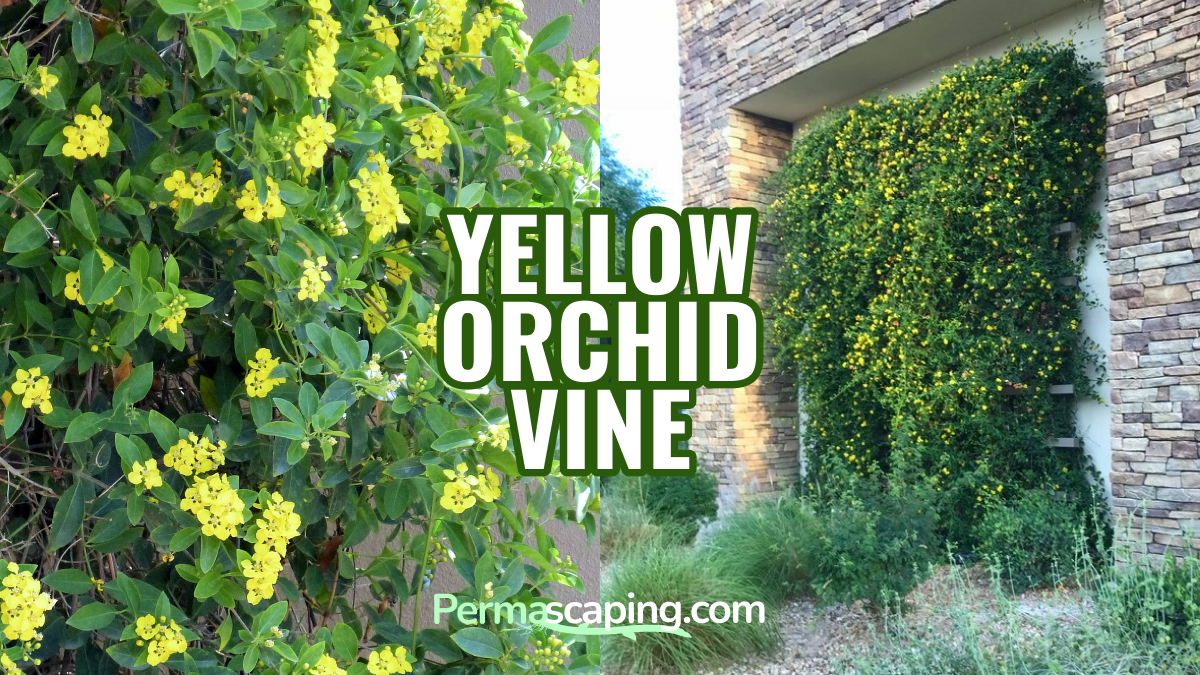Yellow Orchid Vine (Callaeum macropterum, formerly Mascagnia macroptera)
The yellow orchid vine is one of the few vines that thrives in full sun and reflected heat in Phoenix. This makes it one of the best ornamental flowering vines for low desert gardens.
Mature Size
Spreads 10–15 ft wide and 8–12 ft tall with support or pruning into shrub form
Growth Rate
Fast — grows 3–5 ft per season in warm months
Water Requirements (Minimum vs. Maximum Growth)
Minimum: Low — drought-tolerant once established
For Fast Growth: Deep watering 1–2x/week in summer supports lush foliage and nonstop blooms
Ecological & Functional Benefits
Attracts butterflies, bees, and other beneficial insects
Provides green vertical coverage for fences, arbors, or trellises
Can be trained as a sprawling shrub or shaped into a flowering hedge
Edible / Harvest Season / Nutritional Benefits
Not edible — grown strictly for ornamental value
Minimum Chill Hours
None — thrives in hot, low-elevation climates with no winter dormancy required
Maintenance Requirements
Low — light pruning to shape or control growth, especially after bloom flushes
Deadhead if shaping is desired, though not required
Thorny or Not?
No thorns!
Deciduous or Not?
Semi-evergreen — may drop leaves after frost but rebounds quickly in spring
Root System
Fibrous, non-invasive root system
Safe near patios, walls, and fences
Performs well in containers or confined planter beds
Not suitable near heavy foot traffic unless staked or trellised to stay upright
Miscellaneous Notes
Distinctive yellow flowers resemble tiny orchid blooms and appear spring through fall
Decorative winged seed pods (hence “macropterum” = “large wing”) add visual interest
One of the few vines that thrives in full sun and reflected heat in Phoenix
Can be shaped as cascading hedge or low vine if not trellised
Questions about the Yellow Orchid Vine?
Comment below or on our social media pages @permascaping.

